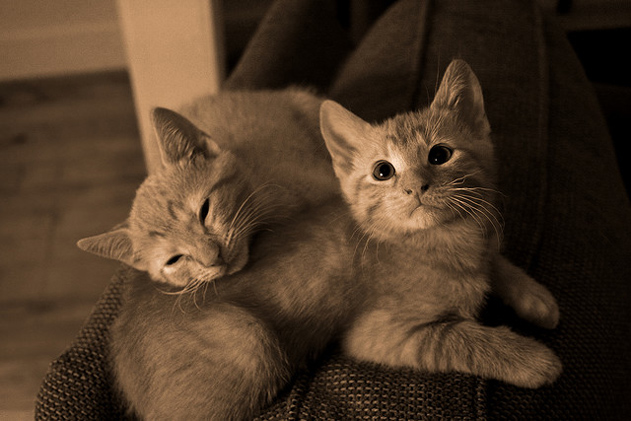Lewis Carroll famously complained that it was impossible to understand kittens because they did nothing but purr. If they purred for yes and meowed for no, he argued, things would be so much easier. But the truth is, as kittens grow up—especially those that do so among human companions—their capacity to communicate vocally develops to an astonishing degree.
Amongst themselves, cats large and small communicate mainly through body language, facial expression and scent. But it appears that through years of domestication, they have founds ways of ‘talking’ with their human families. Cat lovers are only too pleased to tell you how clever their charges are at expressing their feelings and pressing their demands. And though there is no doubt an element of anthropomorphism in this, scientists have found evidence that puss has indeed developed a vocal repertoire that is extremely impressive. Several researchers have identified the numerous vowels and diphthongs that felines use, as well as the importance of the pitches and tones that articulate their meaning, including the celebrated ‘silent meow’ that may in fact be a sound, but one at a frequency too high for humans to hear.
No one who has lived with cats and forged a relationship with them will find this in the slightest bit surprising. Most of us learn to understand what our furry friends are trying to say, and it is striking that in multi-cat households, that understanding embraces each individual cat’s vernacular.
So we can learn what kitty is trying to tell us, but what of the other way around? That cats react to their own names is not in doubt (at least they react to the name we give them; as T.S. Eliot pointed out, a cat’s real name is known only to himself). Many cat people will swear that their pets understand certain words (our own cat, for example, knows that the word ‘yogurt’ means a treat: he loves the blueberry variety that I eat for breakfast, and will run to the kitchen from wherever he is in the house when he hears the word). It is, of course, harder to find scientific evidence to support these kinds of claims, although some research has suggested that cats are keenly adept at learning the behaviors expected of them by their human families. The cynical will say that this is sheer manipulation; that if kitty could use the can opener or change the sand in the litter tray, we would be redundant. I remain to be convinced.
As for the much touted cat’s sixth sense, I can’t help thinking it is largely due to its extraordinary hearing. The healthy human ear can register sounds at frequencies up to around 20,000 Hertz. Dogs fare somewhat better at between 35,000 and 40,000 Hertz. Cats, by contrast, can register frequencies as high as 100,000 Hertz.









